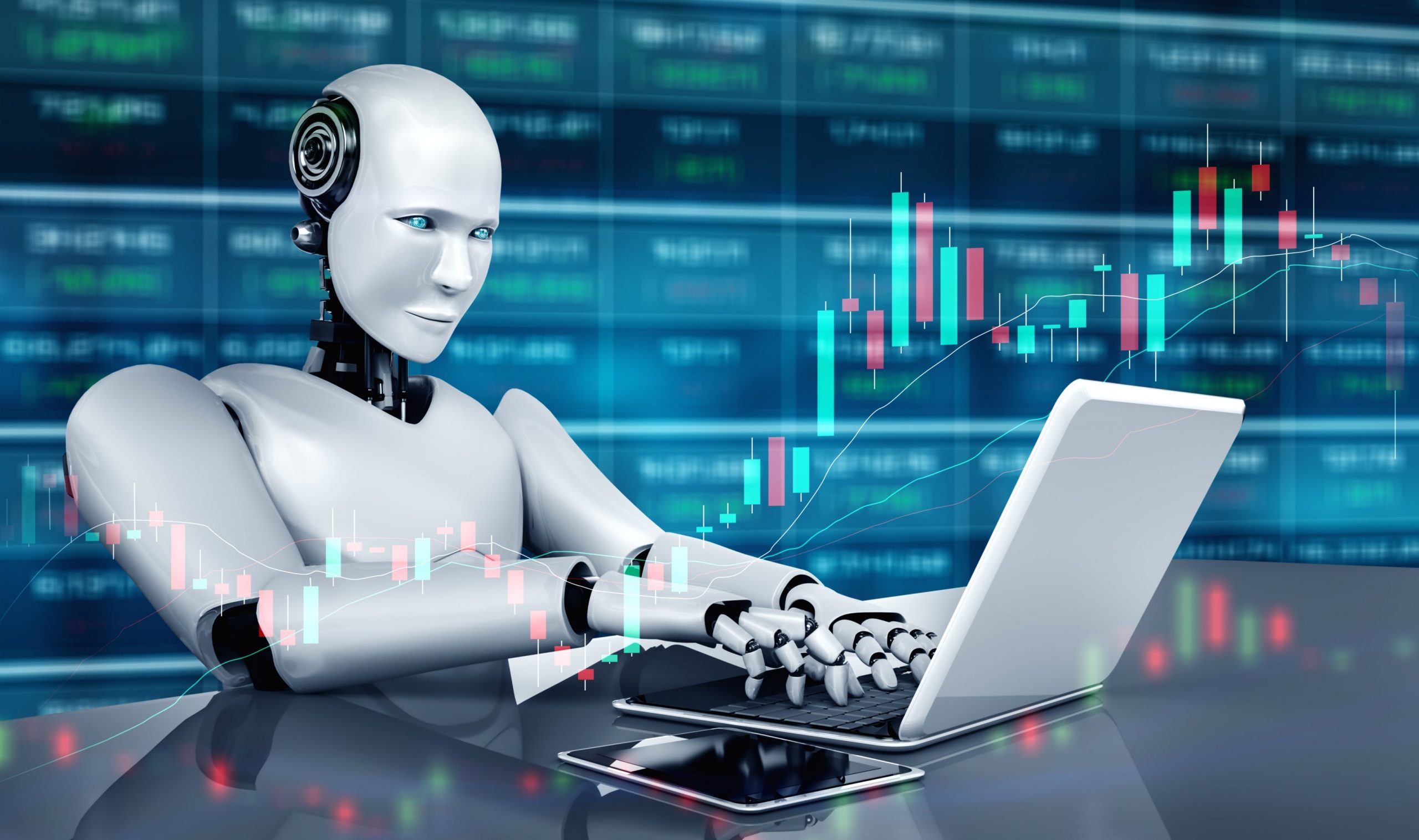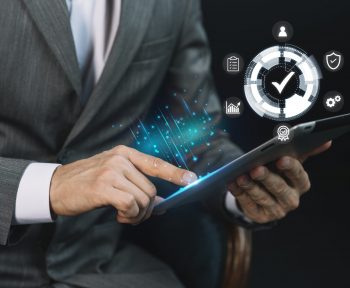Debt collections can be a difficult and time-consuming process for both financial institutions and borrowers. Human calling agents are prone to making errors due to negligence, performance pressure and stress. Even a minor breach in compliance can result in loss to the brand image, heavy fines and penalties. However, the use of AI-powered voicebots in debt collection has emerged as a promising solution for streamlining borrower engagement and improving the efficiency of this critical financial process. This blog will delve into the benefits of voicebot for debt collections, from improved efficiency and accuracy to personalized interactions and compliance safeguards.
The need for streamlined efficiency with AI-powered voicebots
Persistent contacting and urging borrowers for debt repayment is not only considerably costly but also yields limited results. The increased pressure on calling agents to increase call volume and success rates in order to maximize recoveries may also have a negative effect on their performance. Additionally, expanding the operations teams to handle the increasing call volume is expensive and ineffective.
AI-powered voicebots bring in the next level of efficiency to the debt collections process. These intelligent systems can simultaneously handle a large volume of calls, reach out to borrowers and send automated reminders to collect overdue payments. By automating repetitive tasks, voicebots free up human agents to focus on negotiations and personalized interactions. This streamlined approach significantly improves the speed and effectiveness of debt recovery efforts through personalized and human-like engagements. Owing to such growth in efficiency and the impact on the financial services industry, the voicebot market has been expanding steadily. According to a report, the voicebots market size is expected to reach $98.2 billion by 2027, which would imply a CAGR of 18.6% in the period 2022-2027.
Voicebots are powered by advanced AI technologies such as Natural Language Processing (NLP) and context aware dialogue management. They provide an option for inbound calls and are trained to respond to borrower FAQs. Equipped with insights on borrower behavior, lenders can optimize and refine their campaign strategy with an ideal mix of voicebots, human agents, and other communication channels such as chat and instant messaging, for improved borrower reach.
Benefits of voicebots
By leveraging advanced speech recognition and natural language processing technologies, voicebots elevate borrower service and interaction. These sophisticated virtual assistants offer round-the-clock assistance, ensuring that borrowers get prompt assistance and personalized experiences. With the ability to handle multiple conversations simultaneously and automate routine tasks for lenders, voicebots boost operational efficiency while reducing costs. Furthermore, their scalability and adaptability make them valuable assets for businesses of all sizes, empowering them to drive borrower satisfaction. Some of these benefits are explained in detail below.
- Consistent and accurate communication
One of the key benefits of AI-powered voicebots is their ability to deliver consistent and accurate information to borrowers. They are trained to understand calling protocols, ensuring that payment details, terms, and consequences of non-payment are communicated precisely. By eliminating human errors and miscommunication, voicebots enhance the clarity and reliability of debt collection communications.
- 24/7 availability and convenience
AI-powered voicebots operate round the clock, allowing borrowers to engage with the debt collections process at their convenience. Whether it’s making payment arrangements or seeking assistance, borrowers like the flexibility that comes with voicebots. This accessibility enhances the overall experience and speeds up the settlement of outstanding debts.
- Personalized interactions for enhanced engagement
Voicebot for debt collection equipped with AI capabilities can personalize debt collection interactions based on borrower data and transaction histories. By analyzing this information, voicebots can tailor their conversations to the borrower’s financial situation, payment history, and language preferences. Intent recognition capabilities enable the bot to understand borrower’s intent to pay, in turn helping lenders alter collections strategies accordingly. This personalized approach creates a more engaging and empathetic interaction, helping to build a rapport and increase the likelihood of successful debt recovery.
- Compliance and legal safeguards
AI-powered voicebots can be programmed to adhere to regulatory guidelines and legal requirements during debt collections. They ensure that the collections process is conducted in a compliant manner, reducing the risk of non-compliance with regulatory guidelines and potential legal issues for financial institutions. Voicebots can also maintain detailed records of interactions, providing an audit trail that demonstrates adherence to regulations. To determine the effectiveness of the voicebot, lenders can also conduct in-depth quality analyses and run assessment reports.
- Data-driven insights for optimization
AI algorithms integrated into voicebots can analyze borrower interactions and collect valuable data on payment patterns, responses, and common queries. These insights enable financial institutions to identify trends, optimize collections strategies, and make data-driven decisions. By leveraging these data-driven insights, lenders can continuously improve their debt recovery rates and overall performance.
- Strikes a balance between automation and human interaction
While AI-powered voicebots offer numerous benefits, the role of live agents cannot be eliminated. Human agents will continue to play a crucial role in handling complex cases, negotiating payment arrangements, and providing personalized assistance when needed. By giving borrowers the option of inbound calling service, voicebots facilitate the integration of automation and human expertise. In turn, this aids in streamlining the debt collection procedure and ensures effectiveness, higher success rates, and increased client satisfaction.
The futuristic role of AI-powered voicebots
Implementing a voicebot for debt collection is taking center stage, delivering unprecedented efficiency, accuracy, and personalized interactions to the process. By automating repetitive tasks, delivering accurate information through human-like engagement, and providing round-the-clock accessibility, voicebots streamline debt recovery efforts. Collections strategies are further improved by compliance safeguards and data-driven insights.
By leveraging this technology, companies can elevate their customer service, boost customer satisfaction, and gain a competitive edge in today’s digital landscape. Embracing voicebots is not just a trend, but a strategic move towards building stronger customer relationships and driving business success.
Swara: The Future of Collections AI
Swara, the Nextgen Collections AI Assistant from Credgenics, is redefining debt collections through intelligent, empathetic conversations. This genAI-powered voicebot for debt collection combines advanced natural language understanding with multilingual capabilities, enabling financial institutions to engage borrowers with unprecedented sophistication and care.
Unlike traditional automated systems, Swara’s AI technology creates contextual, human-like interactions that adapt to each borrower’s unique situation. With over 1.5 million positive borrower intents and up to 80% reduction in contact center costs, Swara demonstrates how next-generation AI voicebots are transforming collections for lenders, fintechs, and enterprises worldwide.
FAQs:
1. How does a voicebot for debt collection improve compliance compared to human agents?
A voicebot for debt collection ensures compliance by being programmed with regulatory guidelines and legal requirements. Unlike human agents who may inadvertently make errors due to stress or performance pressure, voicebots consistently follow predefined scripts and protocols. They maintain detailed audit trails of all interactions, automatically adhere to calling time restrictions, and never deviate from compliant language, which significantly reduces the risk of regulatory violations.
2. Can a voicebot for debt collection handle complex borrower situations and negotiations?
While a voicebot for debt collection excels at handling routine inquiries, payment reminders, and standard collection scenarios, it works best in a hybrid model alongside human agents. The voicebot can manage initial contact, gather borrower information, process simple payment arrangements, and escalate complex cases to human agents when needed. This approach ensures that borrowers receive appropriate assistance for their specific situations while maximizing operational efficiency and cost savings.
3. What is the difference between a chatbot and a voicebot?
The main difference between a chatbot and a voicebot lies in the mode of communication with users.
A chatbot is a computer program that interacts with users through text-based conversations, typically in a chat interface. Users type in their messages or queries, and the chatbot responds with text-based replies. Chatbots can be implemented on various platforms, such as websites, messaging apps, and social media platforms. They use natural language processing (NLP) algorithms to understand and generate text-based responses.
On the other hand, a voicebot, also known as a voice assistant or virtual assistant, interacts with users through voice-based conversations. Instead of typing text, users communicate with the voicebot using spoken language. Voicebots utilize speech recognition technology to convert spoken words into text and natural language understanding (NLU) algorithms to comprehend user intent. They then generate spoken responses that are communicated back to the user.
4. How does a voicebot work?
Voicebots work through a combination of technologies and processes. Here’s a general overview of how a voicebot typically operates:
- Speech Recognition: The voicebot utilizes speech recognition technology to convert spoken words into text. After analyzing the audio input, it converts it into text so that the system can process it.
- Natural Language Understanding (NLU): The voicebot uses natural language understanding algorithms to decipher the user’s intent and extract pertinent information from the input after the speech has been converted to text. The NLU enables the voicebot to understand user commands, queries, or requests.
- Intent Recognition and Dialog Management: Based on the extracted user intent, the voicebot determines the appropriate action or response. It uses dialog management techniques to maintain context and manage the conversation flow.
- Backend Integration: The voicebot interacts with various backend systems and databases to retrieve or update information. It may communicate with APIs, databases, or other systems to access data relevant to the user’s request. This integration enables the voicebot to provide accurate and up-to-date information or perform specific tasks on behalf of the user.
- Response Generation: Once the voicebot has determined the appropriate action or response, it generates a spoken response that is communicated back to the user. Text-to-speech technology is employed to convert the textual response into audible speech, allowing the voicebot to communicate effectively with the user.
- Continuous Learning and Improvement: Voicebots can be designed to continually learn and improve their performance. They can leverage machine learning techniques to analyze user interactions, gather feedback, and adapt their responses over time. This iterative learning process helps voicebots enhance their accuracy, understand user preferences better, and provide more relevant and personalized experiences.
5. What is the concept of Natural Language Processing used in voicebots?
NLP, or natural language processing, is a key concept used in voicebots to enable them to interpret human language. NLP encompasses a range of techniques and algorithms that facilitate the processing and understanding of text or speech inputs.
In the context of voicebots, NLP plays a crucial role in several aspects:
- Speech Recognition: NLP algorithms are used to convert spoken words or audio inputs into text. Through techniques like automatic speech recognition (ASR), voicebots transcribe the audio signals into textual representations that can be further processed and analyzed.
- Intent Recognition: NLP helps voicebots determine the intent or purpose behind a user’s spoken request or query. By employing techniques like natural language understanding (NLU), voicebots can identify the user’s intention and extract relevant information from the input.
- Entity Extraction: NLP allows voicebots to identify specific pieces of information or entities mentioned in user inputs. By using techniques like named entity recognition (NER), voicebots can extract entities such as names, dates, locations, or product names. This information can then be used to provide more accurate and personalized responses.
- Language Understanding and Contextual Understanding: NLP algorithms help voicebots understand the meaning and context of user inputs. This includes recognizing the relationship between words, understanding the semantics of phrases or sentences, and capturing the context of the conversation. These capabilities enable voicebots to have more natural and context-aware interactions with users.
- Sentiment Analysis: NLP techniques can be utilized to analyze the sentiment or emotion expressed in user inputs. Voicebots can detect positive, negative, or neutral sentiment, allowing them to respond appropriately and provide empathetic or helpful responses based on user mood or sentiment.





